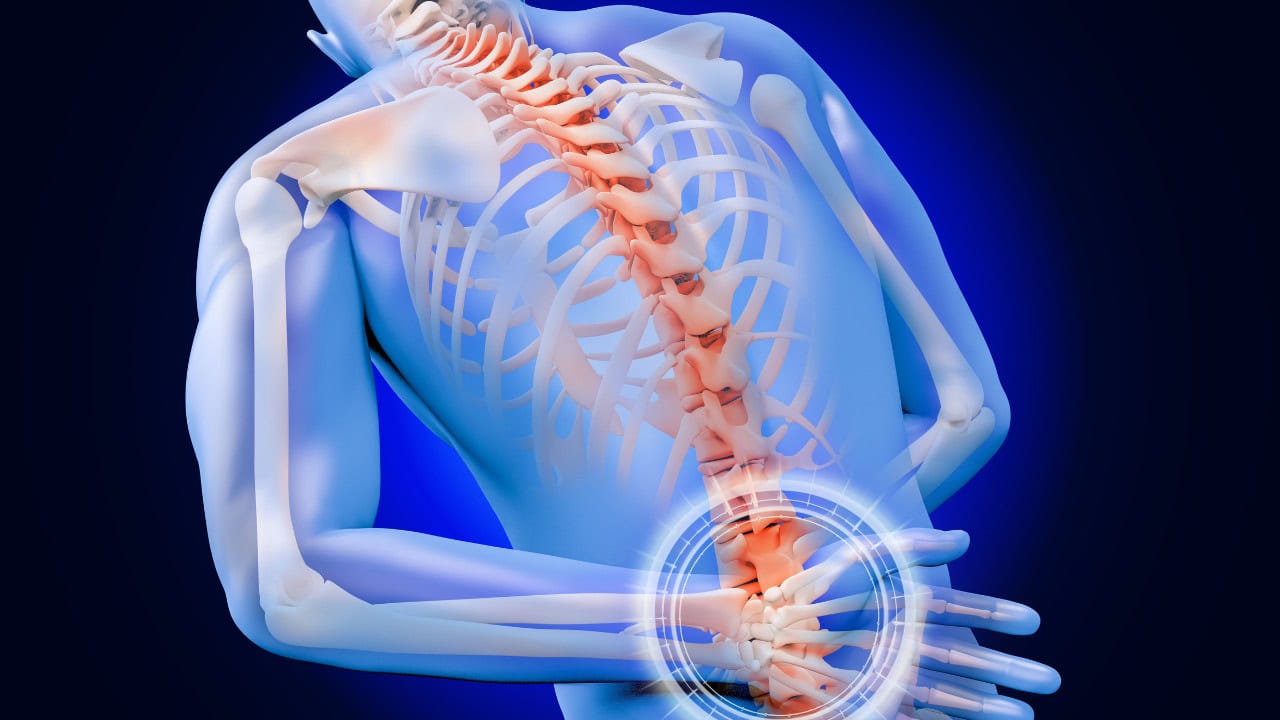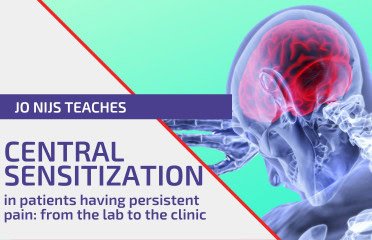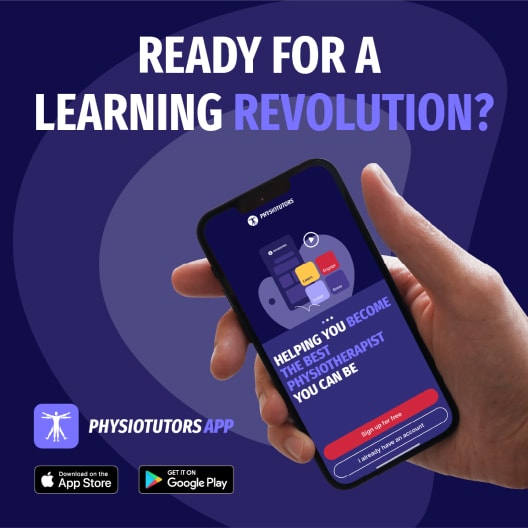Navigating the Complexities of Low Back Pain: Insights from Recent Research on Non-Specific Low Back Pain and Disc Herniations

Low back pain (LBP) is a leading cause of disability worldwide, affecting millions of individuals across various age groups. Despite decades of research, the complexity of LBP remains a challenge in both understanding its mechanisms and providing effective treatment. Among the many factors that contribute to LBP, disc herniations, mechanical loading, and psychosocial elements play significant roles. Drawing from our recent podcast with Dr. Daniel Belavy, this blog explores the latest research into the biomechanics of disc health, the challenges of diagnosing non-specific LBP, the influence of contextual factors on treatment outcomes, and the role of exercise in managing chronic LBP. With a focus on evidence-based insights, we aim to highlight how this research informs clinical practice and provides pathways for more effective interventions.
Non-specific low back pain accounts for up to 95% of all low back pain cases, yet it lacks a clear classification system or subgrouping.
The Challenge of Classifying Non-Specific Low Back Pain
Non-specific low back pain (NSLBP) remains one of the most challenging aspects of LBP management. It is classified as a diagnosis of exclusion, meaning it is given when no clear pathology, such as a herniated disc, spinal stenosis, or radicular pain, can be identified. NSLBP accounts for up to 95% of all LBP cases, yet it lacks a clear classification system or subgrouping, which makes treatment more difficult to personalize.
Traditional treatment guidelines for NSLBP are broad and offer general recommendations, such as exercise and education, but they often lack specificity regarding which interventions work best for different patient subgroups. This lack of clarity has spurred efforts to find more precise subgroups based on biopsychosocial factors, including imaging data, pain sensitization, and muscle composition. Using advanced technologies such as artificial intelligence, researchers are collecting large datasets to help identify potential subgroups within the NSLBP population. These subgroups, if identified, could allow for more personalized and effective treatments that target specific mechanisms contributing to pain.
The challenge of identifying subgroups within the NSLBP population is significant, given the multifactorial nature of back pain. Factors such as psychosocial influences, central nervous system changes, and variations in how pain is processed further complicate the search for meaningful subgroups and treatment personalization.

The Role of Contextual Factors in Treatment Outcomes
Contextual factors, such as patient expectations, therapist beliefs, and the therapeutic environment, can influence treatment outcomes for LBP. While clinicians often focus on the specifics of interventions, such as the physiological effect of a certain treatment modality, the broader context in which treatment occurs should not be overlooked. Research has shown that contextual factors, such as a patient’s belief in the efficacy of a treatment or the rapport between patient and therapist, may account for a substantial portion of the treatment effect.
For example, a well-conducted study may reveal that a particular treatment like manual therapy or exercise is effective. However, when contextual factors like patient belief, therapist confidence, and the therapeutic environment are factored in, the treatment may appear more effective than it would be under neutral conditions. A study suggests that as much as 70-90% of the treatment effect in low back pain may be attributed to contextual factors and natural history, rather than the specific factors of the treatment itself.
While these findings highlight the importance of building a strong therapeutic alliance and addressing patient fears or concerns, they also raise questions about the reliability and consistency of treatment outcomes. Can the effects of certain treatments be generalized across different patients, or do they depend largely on the contextual factors involved? The answer may not be straightforward, and clinicians must strike a balance between providing evidence-based interventions and designing the treatment around what the patient might think is best for them.
Watch this Masterclass
Watch this free Masterclass with chronic pain specialist Jo Nijs exclusively on the Physiotutors App.

Challenges in Conducting Randomized Controlled Trials: The Difficulty of Placebo and Control Interventions
Conducting high-quality (RCTs) is often considered the gold standard for evaluating treatment efficacy. However, RCTs in the field of low back pain face several challenges, particularly when it comes to the use of placebo or control interventions. A key challenge in LBP research is the difficulty of designing placebo treatments that are both effective and ethically sound.
In many cases, placebo interventions need to be convincing enough to replicate the experience of the active treatment, but without delivering any real therapeutic benefit. For instance, when testing manual therapy or exercise-based interventions, it becomes challenging to create a sham or placebo version of these treatments that patients believe in, without potentially introducing bias. If patients are aware that they are receiving a placebo treatment, it could affect the results due to psychological factors such as expectancy bias.
Moreover, even when placebo treatments are carefully designed, they may still not adequately control for the full range of variables involved in LBP. For example, chronic low back pain is influenced by multiple factors, such as fear-avoidance behaviors, central nervous system changes, and emotional distress, that are not always easily accounted for in the randomization procedure and the end-result. As a result, placebo-controlled trials in low back pain may struggle to provide conclusive evidence on the effectiveness of specific treatments.
The challenge of isolating the true effects of an intervention also extends to the design of control groups in RCTs. In some studies, patients may receive only a minimal intervention or no treatment at all, which may not be a fair comparison to the active treatment. This creates a dilemma: how can researchers ensure that the comparison group is receiving an appropriate treatment that accurately reflects the real-world clinical context, while still isolating the effect of the intervention being tested?
These challenges in RCT design often lead to mixed or inconclusive results, making it difficult to draw definitive conclusions about the best treatments for low back pain. As researchers continue to investigate treatment efficacy, there is a growing recognition of the importance of improving trial design to better capture the complexities of (low back) pain and the multifactorial nature of its treatment.
Exercises that emphasize time under load and those that push individuals to work at higher intensities may be more beneficial in reducing pain.
Exercise for Low Back Pain: Which Type and What Dose?
Exercise is one of the most commonly prescribed treatments for chronic low back pain. Various types of exercise have been shown to reduce pain and improve function, including strength training, aerobic exercise, Pilates, stabilization exercises, etc. However, the debate continues regarding which type of exercise is the most effective.
A network meta-analysis of randomized controlled trials (RCTs) comparing different exercise modalities for chronic LBP found that many forms of exercise are similarly effective. The data suggested that strengthening exercises, stabilization exercises, and Pilates are all equally beneficial in reducing pain and improving function. Notably, Pilates emerged as having the most significant effect in terms of pain reduction, but this finding has been met with some skepticism due to the limited number of RCTs specifically investigating Pilates. Other forms of exercise, such as aerobic exercise and strength training, also showed positive outcomes.
Despite the findings, the real challenge lies in determining the optimal type and dose of exercise for low back pain. Research suggests that exercise intensity, duration, and frequency all play a role in the effectiveness of the treatment. In particular, exercises that emphasize time under load and those that push individuals to work at higher intensities may be more beneficial in reducing pain. However, the ideal dose of exercise remains unclear, as research exploring the optimum exercise dose for LBP involves only correlational studies and small sample size RCTs, with potential confounding factors not accounted for. Ongoing research providing a higher level of evidence is required to determine the most effective prescription for chronic low back pain and is potentially on its way from a group of researchers in Germany.
Final thoughts
In clinical practice, it is essential to tailor interventions to the individual needs of each patient, recognizing that no single treatment modality is universally effective. Patient preferences, goals, and responses to different types of exercise should be central considerations in developing a personalized approach to managing low back pain. What proves effective for one individual may not yield the same results for another, which is why customizing exercise regimens is important in order to optimize long-term outcomes. Additionally, it is often beneficial to incorporate a combination of therapeutic modalities, as this holistic approach addresses not only the physical aspects of pain but also its psychological components. By integrating exercise, education, and psychological support, clinicians can provide comprehensive care that yields both physical recovery and improved emotional well-being. As research continues to uncover the most effective strategies for managing low back pain, flexibility must be ensured in treatment, allowing clinicians to adapt their approach based on the evolving needs and responses of each patient. As far as current evidence goes, a personalized, multifaceted treatment plan is likely to be the most effective way to achieve sustained improvement and quality of life for patients struggling with this pervasive condition.
References
Adams, M. A., Dolan, P., & Hutton, W. C. (1987). Diurnal variations in the stresses on the lumbar spine. Spine, 12(2), 130–137. https://doi.org/10.1097/00007632-198703000-00008
Apeldoorn, A. T., Swart, N. M., Conijn, D., Meerhoff, G. A., & Ostelo, R. W. (2024). Management of low back pain and lumbosacral radicular syndrome: the Guideline of the Royal Dutch Society for Physical Therapy (KNGF). European journal of physical and rehabilitation medicine, 60(2), 292–318. https://doi.org/10.23736/S1973-9087.24.08352-7
Belavy, D. L., Adams, M., Brisby, H. et al. (2016). Disc herniations in astronauts: What causes them, and what does it tell us about herniation on earth? European Spine Journal, 25, 144–154. https://doi.org/10.1007/s00586-015-3917-y
Belavý, D. L., Quittner, M. J., Ridgers, N., Ling, Y., Connell, D., & Rantalainen, T. (2017). Running exercise strengthens the intervertebral disc. Scientific Reports, 7, 45975. https://doi.org/10.1038/srep45975
Belavy, D. L., Quittner, M., Ridgers, N. D., Ling, Y., Connell, D., Trudel, G., & Rantalainen, T. (2019). Beneficial Intervertebral Disc and Muscle Adaptations in High-Volume Road Cyclists. Medicine and Science in Sports and Exercise, 51(1), 211–217. https://doi.org/10.1249/MSS.0000000000001770
Hangai, M., Kaneoka, K., Hinotsu, S., Shimizu, K., Okubo, Y., Miyakawa, S., Mukai, N., Sakane, M., & Ochiai, N. (2009). Lumbar intervertebral disk degeneration in athletes. The American Journal of Sports Medicine, 37(1), 149–155. https://doi.org/10.1177/0363546508323252
Iatridis, J. C., MacLean, J. J., Roughley, P. J., & Alini, M. (2006). Effects of mechanical loading on intervertebral disc metabolism in vivo. The Journal of Bone and Joint Surgery. American Volume, 88 Suppl 2(0 2), 41–46. https://doi.org/10.2106/JBJS.E.01407
Lotz, J. C. (2004). Animal models of intervertebral disc degeneration: lessons learned. Spine, 29(23), 2742–2750. https://doi.org/10.1097/01.brs.0000146498.04628.f9
Mitchell, U. H., Bowden, J. A., Larson, R. E., Belavy, D. L., & Owen, P. J. (2020). Long-term running in middle-aged men and intervertebral disc health, a cross-sectional pilot study. PLOS ONE, 15(2), e0229457. https://doi.org/10.1371/journal.pone.0229457
Neason, C., Miller, C. T., Tagliaferri, S. D., Belavy, D. L., Main, L. C., Ford, J. J., Hahne, A. J., Bowe, S. J., & Owen, P. J. (2024). Exercise prescription variables predict reductions in pain intensity in adults with chronic low back pain: secondary analysis of a randomised controlled trial. BMJ Open Sport & Exercise Medicine, 10(1), e001744. https://doi.org/10.1136/bmjsem-2023-001744
Pedersen, J. R., Strijkers, R., Gerger, H., Koes, B., & Chiarotto, A. (2024). Clinical improvements due to specific effects and placebo effects in conservative interventions and changes observed with no treatment in randomized controlled trials of patients with chronic nonspecific low back pain: a systematic review and meta-analysis. Pain, 165(6), 1217–1232. https://doi.org/10.1097/j.pain.0000000000003151
Saueressig, T., Owen, P. J., Diemer, F., Zebisch, J., & Belavy, D. L. (2021). Diagnostic Accuracy of Clusters of Pain Provocation Tests for Detecting Sacroiliac Joint Pain: Systematic Review With Meta-analysis. The Journal of Orthopaedic and Sports Physical Therapy, 51(9), 422–431. https://doi.org/10.2519/jospt.2021.10469
Saueressig, T., Braun, T., Steglich, N., Diemer, F., Zebisch, J., Herbst, M., Zinser, W., Owen, P. J., & Belavy, D. L. (2022). Primary surgery versus primary rehabilitation for treating anterior cruciate ligament injuries: a living systematic review and meta-analysis. British Journal of Sports Medicine, 56(21), 1241–1251. https://doi.org/10.1136/bjsports-2021-105359
Saueressig, T., Owen, P. J., Pedder, H., Arora, N. K., Simons, M., Kaczorowski, S., Miller, C. T., Donath, L., & Belavy, D. L. (2024). Boosting treatment outcomes via the patient-practitioner relationship, treatment-beliefs or therapeutic setting. A systematic review with meta-analysis of contextual effects in chronic musculoskeletal pain. The Journal of Orthopaedic and Sports Physical Therapy, 54(7), 440–456. https://doi.org/10.2519/jospt.2024.12259
Swain, C. T. V., Pan, F., Owen, P. J., Schmidt, H., & Belavy, D. L. (2020). No consensus on causality of spine postures or physical exposure and low back pain: A systematic review of systematic reviews. Journal of Biomechanics, 102, 109312. https://doi.org/10.1016/j.jbiomech.2019.08.006
Tagliaferri, S. D., Armbrecht, G., Miller, C. T., Owen, P. J., Mundell, N. L., Felsenberg, D., Thomasius, F., & Belavy, D. L. (2020). Testing the deconditioning hypothesis of low back pain: A study in 1182 older women. European Journal of Sport Science, 20(1), 17–23. https://doi.org/10.1080/17461391.2019.1606942
Tagliaferri, S. D., Mitchell, U. H., Saueressig, T., Owen, P. J., Miller, C. T., & Belavy, D. L. (2022). Classification Approaches for Treating Low Back Pain Have Small Effects That Are Not Clinically Meaningful: A Systematic Review With Meta-analysis. The Journal of Orthopaedic and Sports Physical Therapy, 52(2), 67–84. https://doi.org/10.2519/jospt.2022.10761
Videman, T., Nurminen, M., & Troup, J. D. (1990). 1990 Volvo Award in clinical sciences. Lumbar spinal pathology in cadaveric material in relation to history of back pain, occupation, and physical loading. Spine, 15(8), 728–740.

Anibal Vivanco
Physiotherapist, content creator
NEW BLOG ARTICLES IN YOUR INBOX
Subscribe now and receive a notification once the latest blog article is published.







